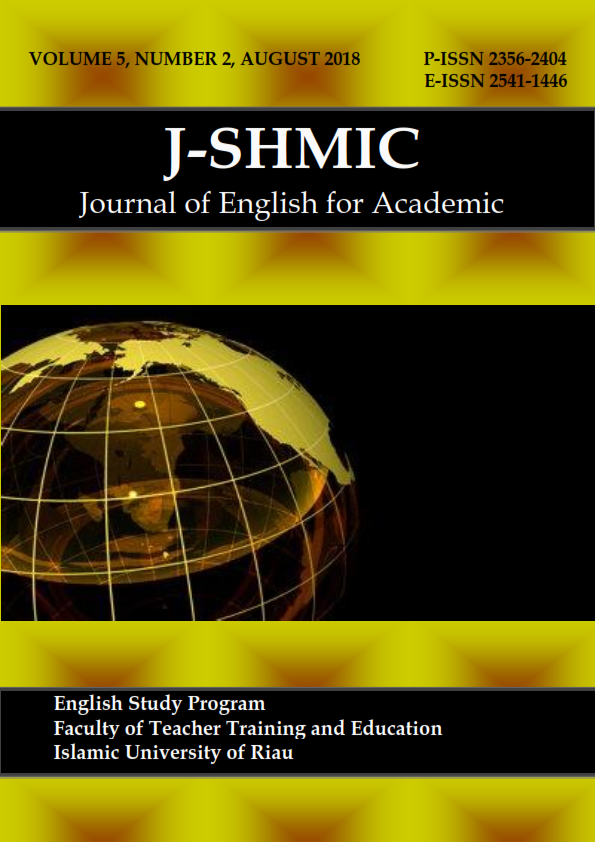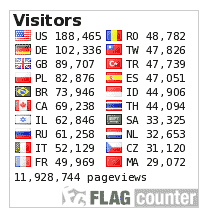Derivational and Inflectional Morphemes: A Morphological Analisis
Keywords:
Morphemes,Derivational, Inflectional, Reading Texts, English TextbookAbstract
This study was intended to describe the category of inflectional and derivational morphemes found in Reading Texts of 2013 Curriculum English Textbook for the X Grade of Senior High Schools Published by Ministry of Education and Culture. Morpheme is used to refer to the smallest unit that has meaning or serves a grammatical function in a language. The morphemes which can meaningfully stand alone are called free morphemes while the morphemes such as –er and –s, which cannot meaningfully stand alone are called bound morphemes. The design of this study was descriptive qualitative. The results of this study show that Derivational prefixes consist of inter-, eco-, un-, ar-, pre-, re-, pro-, be-, de-, in-, dis-, a-, ex-, auto-, mis-, agri-, em-, ap-, im- and al-. While, Derivational suffixes consist of four categories. Thus are nominal, verbal, adjectival, and adverbial suffixes. First, nominal suffixes, namely –ism, -ation, -al, -ing, -ist, -or, -ity, -er, -ance, -ment, -ion, -ess, -ium, -ature, -ry, -ant, -ce, -ive, -cy, -y, -r, -ge, and -ness. Second, Verbal suffixes, namely –n and –ize. Third, Adjectival suffixes, namely –al, -ly, -ous, -ing, -able, -ic, -ish, -ive, -ian, -ny, -less, -ed, -ary, -nese, -y, and –ful and the last is adverbial suffix –ly. Otherwise, the categories of inflectional morphemes that found in texts consist of Noun suffixes (plural) such as; –s, -ies, and –es, Noun suffixes (possessive) e.g; –s’ and -’s, Verb suffixes (3rd person singular) are –s and –es, Verb suffixes (past tense) are –ed and –d, Verb suffixes (past participle) such as; –n, -d, and -ed, Adjective suffixes (comparative) are –er, - r, and –ier and Adjective suffixes (superlative) are –st and –est. Therefore, based on the result of finding verb suffixes are not found.
Downloads
References
Penelitian Suatu Pendekatan Praktek. PT. Rineka Cipta: Jakarta.
Graves, Kathleen. 2000. Designing
Language Courses: A Guide for
Teachers.
Haspelmath, Martin & Andrea D. Sims.
2010. Understanding Morphology:
2nd Edition. London: Hodder
Education.
Kieffer, M. J., & Lesaux, N. K. (2008). The role of derivational morphology in the reading comprehension of Spanish-speaking English
language learners. Reading and Writing, 21(8), 783-804. Retrieved from http://search.proquest.com/docview
/85681834?accountid=11774[Acce ssed 13.12.2017]
Katamba, Francis. 1993. Morphology.
London: Macmillan LDT. Katamba, Francis. 1994. Englsih Words. London: Routhladge.
Mahmood, Khalid. 2011. Conformity to Quality Characteristics of Textbooks: The Illusion of Textbook Evaluation in Pakistan. Journal of Research and Reflections in Education.
Vol.5, No.2; pp. 170-190;
December 2011. Http://www.ue.edu.pk/jrre. (Accessed on
Mart 21th, 2018).
Nida, Eugene A. 1952. Morphology: The Descriptive Analysis of Words (Second Edition). ANN ARBOR: University of Michigan Press.
Plag, Ingo. 2003. Word-Formation in English. New York: Cambridge University Press
Rugaiyah. 2016. Pengantar Penelitian Kulaitatif dan Analisis Bahasa. Pekanbaru: Forum Kerakyatan.
Srijono, Djoko. 2010. An Introductory
Course of Linguistics. Surakarta:Muhammadiyah University Press.
Sudaryanto. 1993. Metode dan Aneka Teknik Analisis Data:Pengantar Penelitian Wahana Kebudayaan secara Linguistis.Yogyakarta: Duta
Wardhaugh, Ronald. Introduction to Linguistics. Second Edition. New York: McGraw Hill, Inc., 1987.
Widiati, Utami., dkk. 2017. Bahasa Inggris (Edisi Revisi 2017). Jakarta: Pusat Kurikulum dan Perbukuan, Balitbang, Kemendikbud.
White, T. G., Power, M. A., & White, S. (1989). Morphological analysis: Implications for teaching and understanding vocabulary growth. Reading Research Quarterly, 24(3),
283-304. Retrieved from http://www.jstor.org/stable/747771
?origin=crossref&&seq=1#page_scan_tab
_contens
[Accessed 12.3.2015]
Published
How to Cite
Issue
Section
This is an open-access article distributed under the terms of the Creative Commons Attribution-ShareAlike 4.0 International License which permits unrestricted use, distribution, and reproduction in any medium. Users are allowed to read, download, copy, distribute, search, or link to full-text articles in this journal without asking by giving appropriate credit, providing a link to the license, and indicating if changes were made. All of the remixes, transform, or build upon the material must distribute the contributions under the same license as the original.











